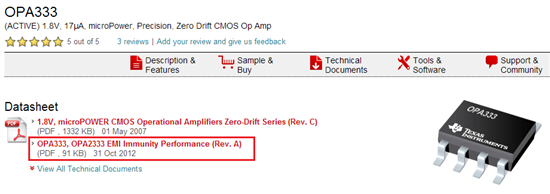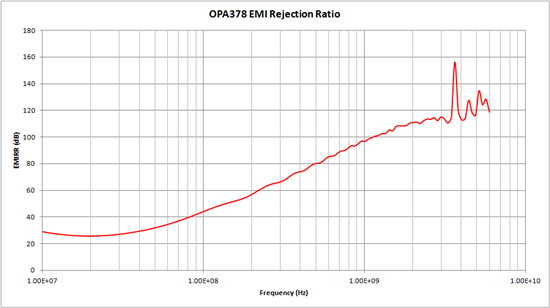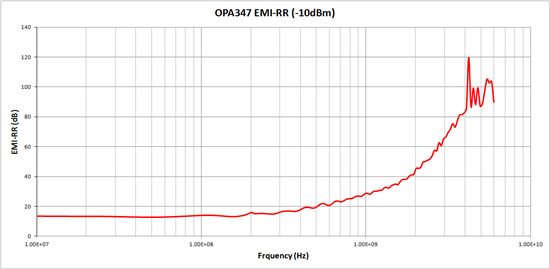Narional Semiconductor developed a method of measuring the EMI rejection ratio (EMIRR) of OpAmps in AN-1698. (This application note was authored by Gerrit de Wagt and Arie van Staveren in 2007.)
It would be useful for engineers to know what the EMIRR is of all opamps.
The OPA378 has internal 25 mhz EMI filters. Has the OPA378 been tested to the methods in AN-1698? How can I find this data?




